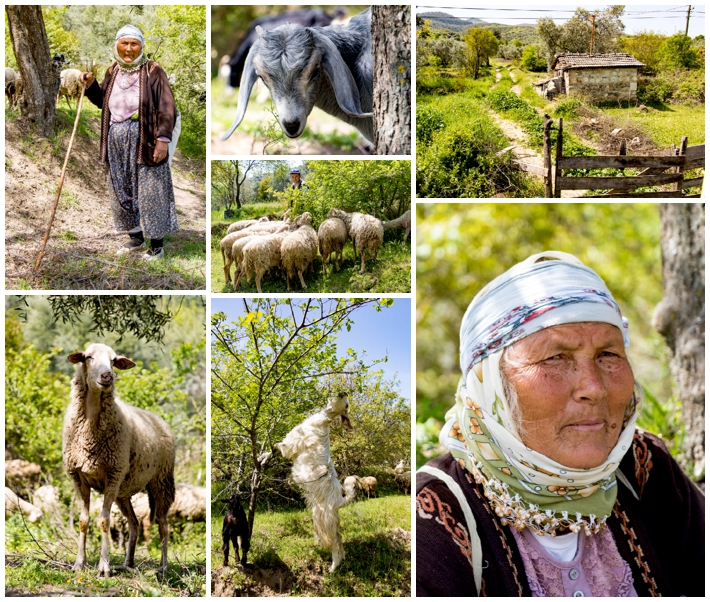
This morning we got up early for a long bus ride to our next hotel. On the road, Mehmet suddenly told the bus driver to stop, then back up a couple hundred yards. He had spotted a woman herding goats on the side of the road. In what became a common occurrence, he approached the woman, greeted her with “merhaba” (“hello” in Turkish), asked permission to photograph her, then invited us to crowd around with our cameras. Fortunately, there were only six of us (Mehmet keeps his photo tours small), so there wasn’t too much jockeying for position as the shutters started clicking.
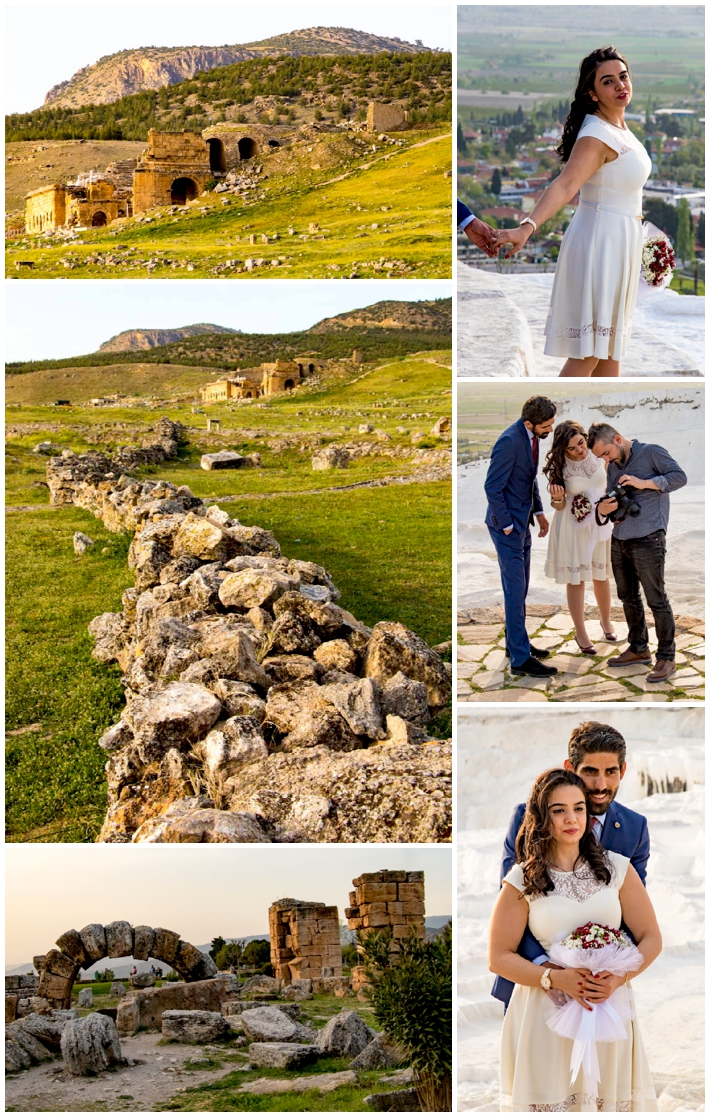
After a lunch in Karacasu, which we will come back to later, we proceeded to Pamukkale. Walking towards the calcium terraces of Pamukkale, the small ancient castle of Hiropolis built in the 3rd century AD can be seen off to the side. Just as we arrived at the terraces, we came across a pre-wedding photography session. A young newly married couple were having a professional photo session created for their memory books. We immediately thought just how common a scene like this is back in the US for new brides these days. These scenes repeatedly reminded us just how much we have in common with the Turks, even if the language makes no sense to our ears.
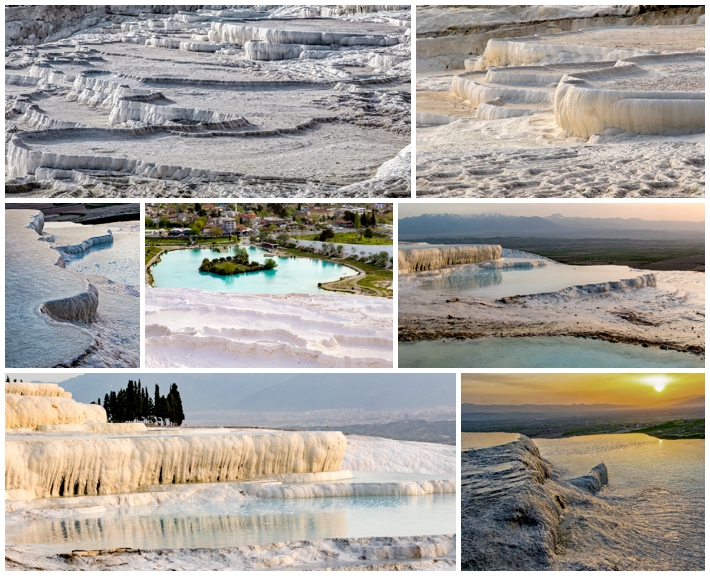
As we passed the pre-wedding photo shoot, we came across the famous Pamukkale calcium terraces. Pamukkale means “cotton castle” and the area consists of hot springs laden with calcium deposits that evaporate and leave the white terraces behind. This area has been a hot-spot of tourism for thousands of years, and brought us here today.
The underground springs that feed the terraces are now controlled by 20th century sluice gates. Unfortunately, most of the terraces had no water today, as the local government chooses to let them dry periodically to maintain the clean white appearance. Mehmet went off in search of water, and discovered one far-flung set of pools that still had water, even though the park guards insisted there was none. He then ran (literally) back to the entrance gate, hired two golf carts, picked us up and drove us there in time for the sunset. Though I was impressed with Mehmet’s dedication in finding photo opportunities for us, I later realized it was just his standard approach and what makes him special — he did this kind of quick-change, find-the-best-spot repeatedly for us during the entire tour.
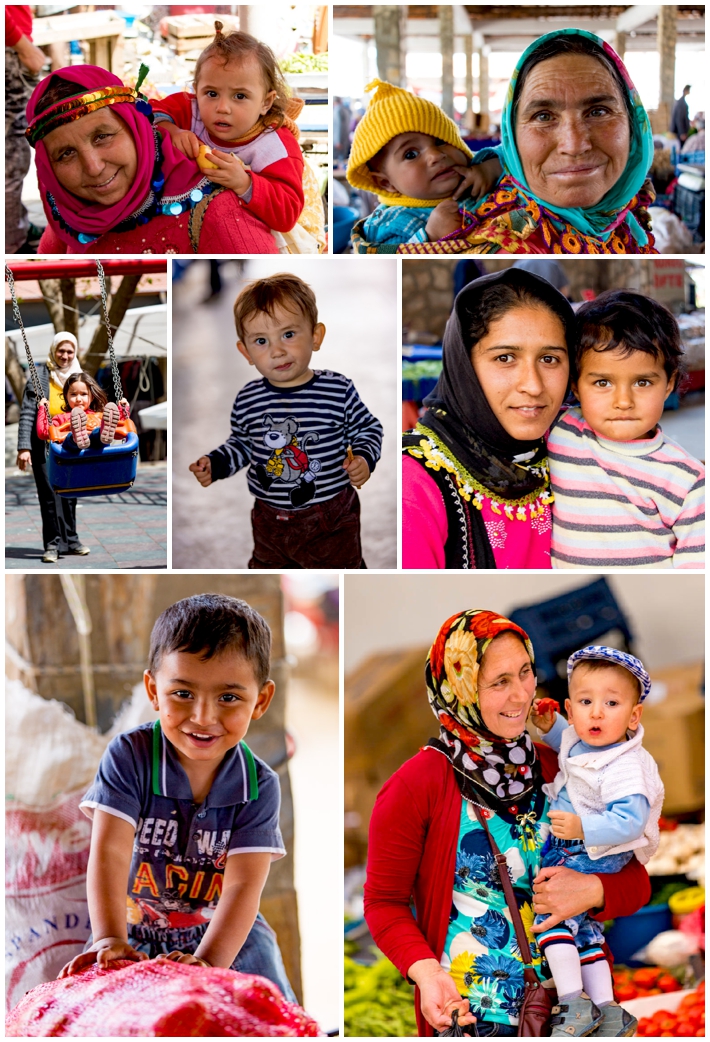
Children, often with their mothers carrying them, in the Karacasu market.
Remember I said we would come back to the village of Karacasu? Well, here we are in a special place where no tour buses would generally stop. We had a rather nice lunch at an outdoor cafe, then had an hour to photograph the locals going along on their daily business in the market. This was thoroughly enjoyable, and surprising in some ways.
This was our fourth day on tour with Mehmet. We have begun to realize that Turkish people are friendly, and not camera shy. They only rarely indicate they do not want a photo taken. More often, they will turn and smile, before returning to their daily life. This market took this to a new level though. People in this market did not just cooperate — they profusely thanked us (usually in Turkish, that we could only understand via body language), and then often gave us little gifts for taking their photos. When we loaded the bus after the hour, we came back laden with apples, bell peppers, twigs of spices, or whatever the person was selling and offered as a token of friendship.
In some ways, this was the hardest section to edit photos for the blog. I normally limit myself to seven photos per “story,” so that one photo montage has enough images to see, in a large enough size (after lots of reader feedback that the earlier crowded sets were too small — thanks for letting me know!), and the story is told enough to support the text. Here, there were just too many photos of market people that I fell in love with! I edited some 500 of them down to 60, and then those down to 28. It hurt too much to cut further, and so here you get a sampling of the glorious people of the Karacasu market, that welcomed all six of us into their lives for an hour this afternoon.
To keep the text from getting overly long, I will let the next blocks speak for themselves. Hope you enjoy them as much as we did while interacting with these people!
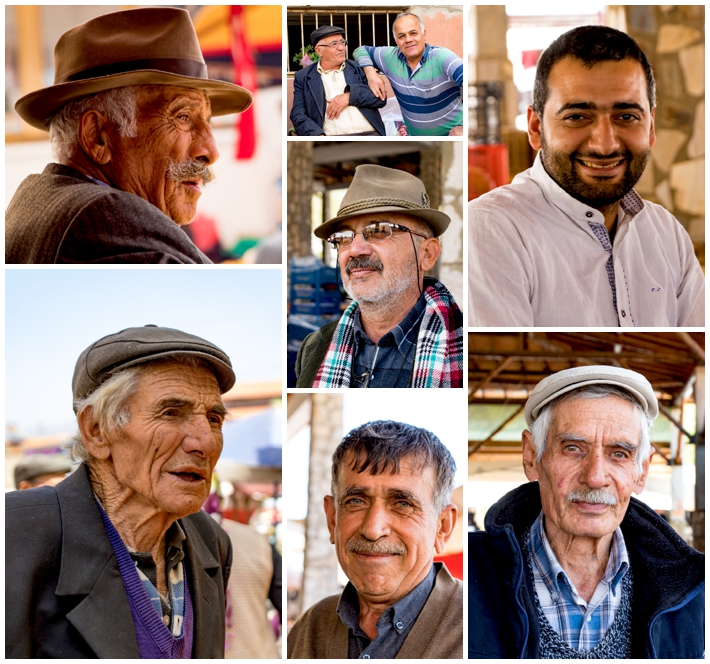
Men in the Karacasu market
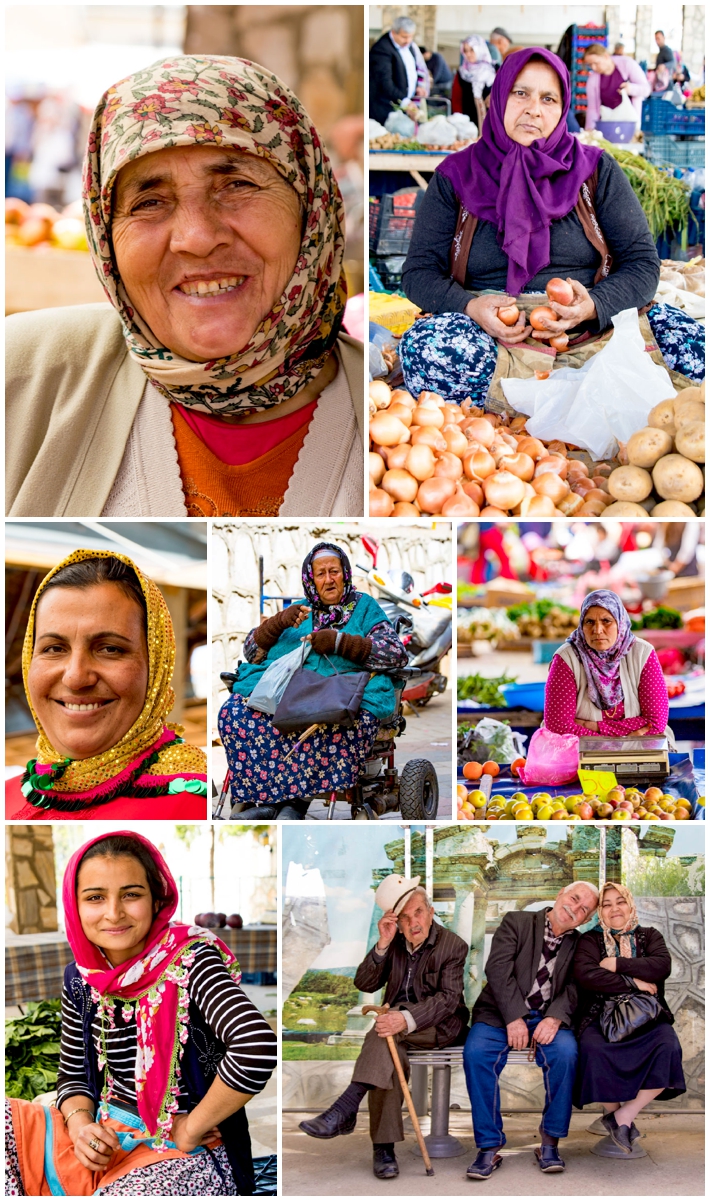
Karacasu market women
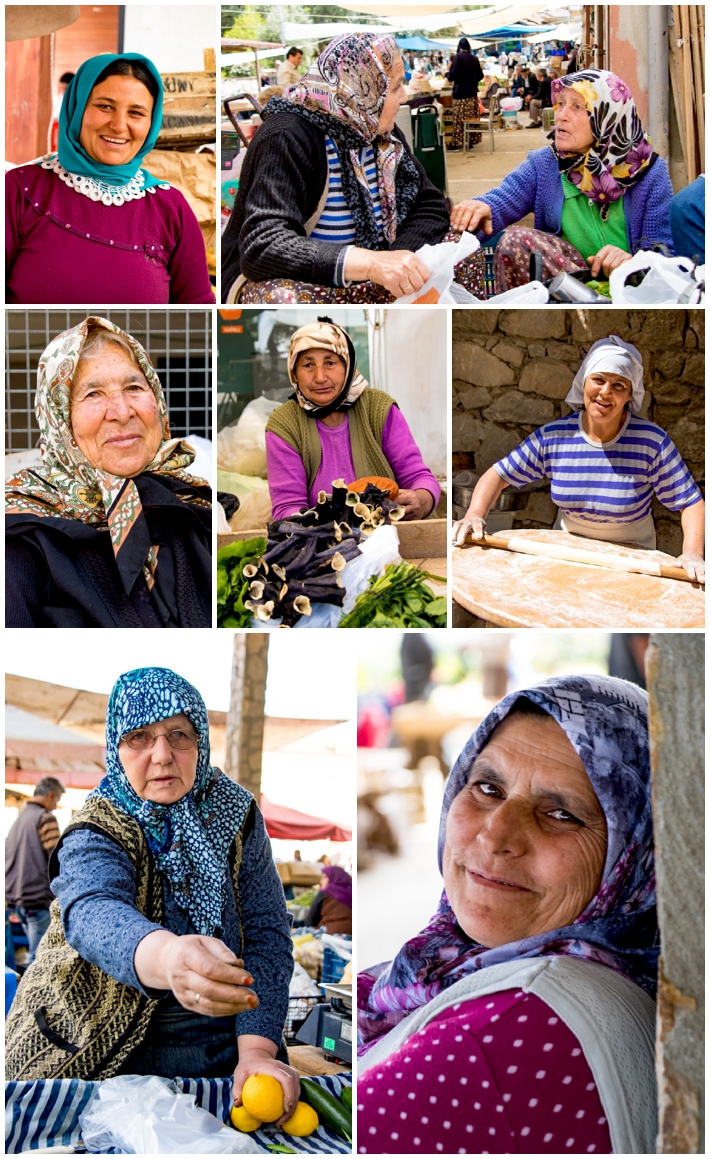
More Karacasu market women